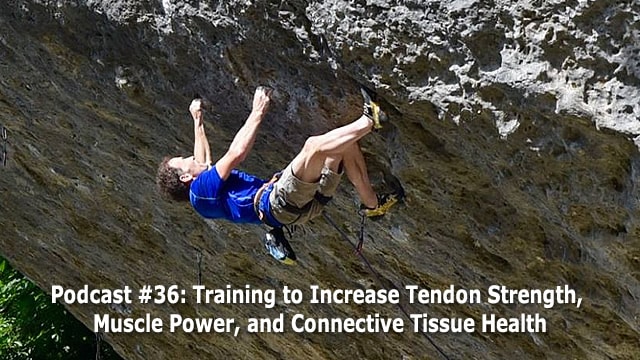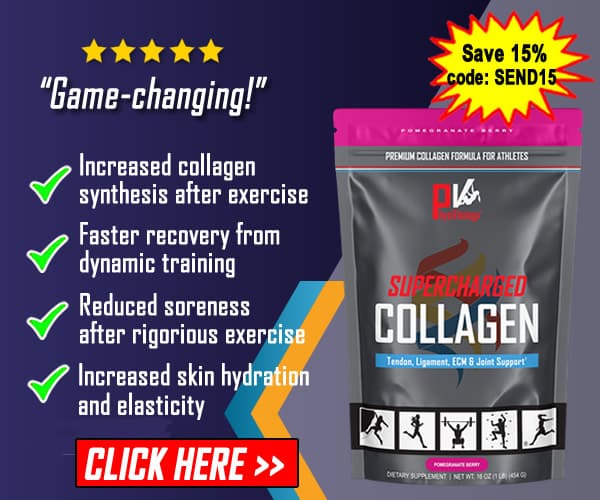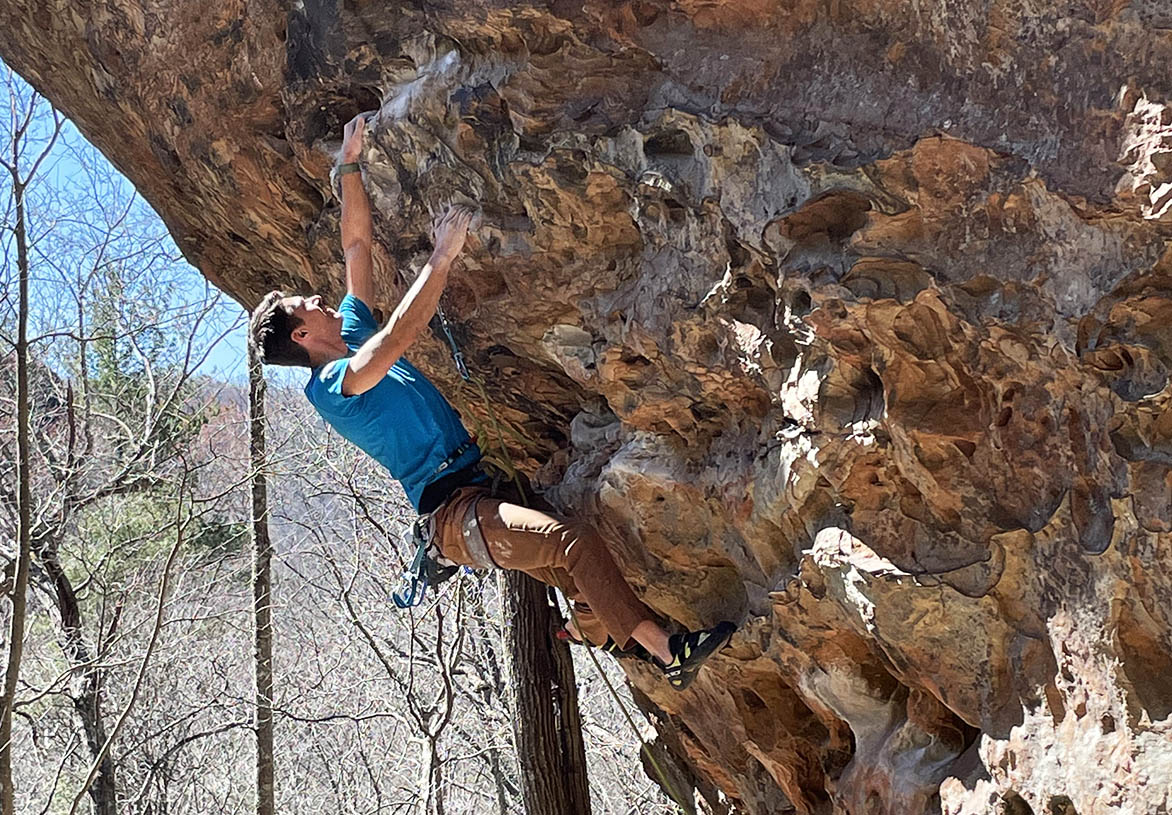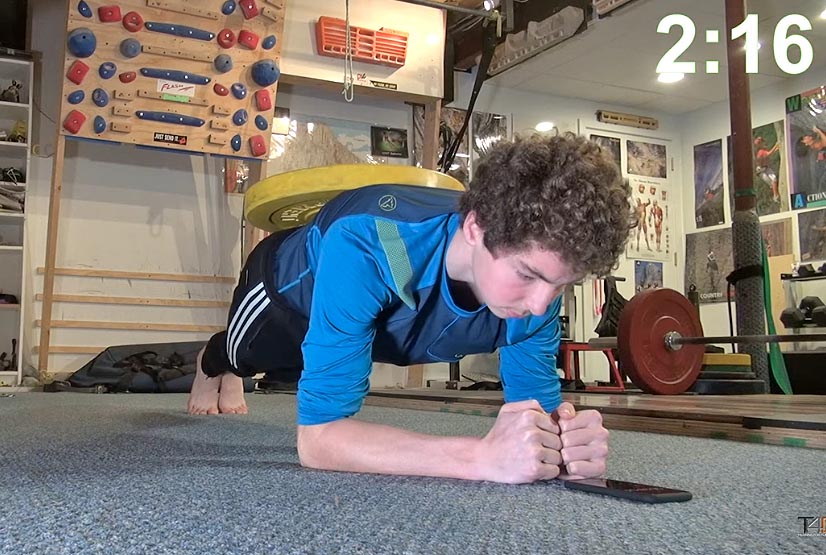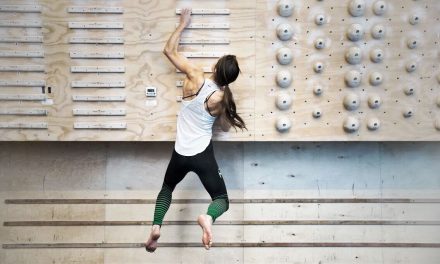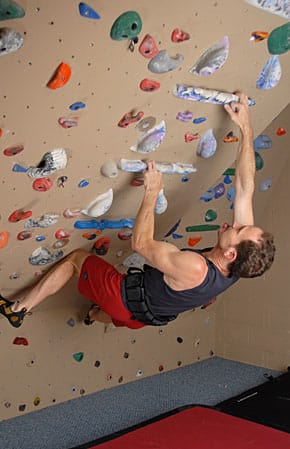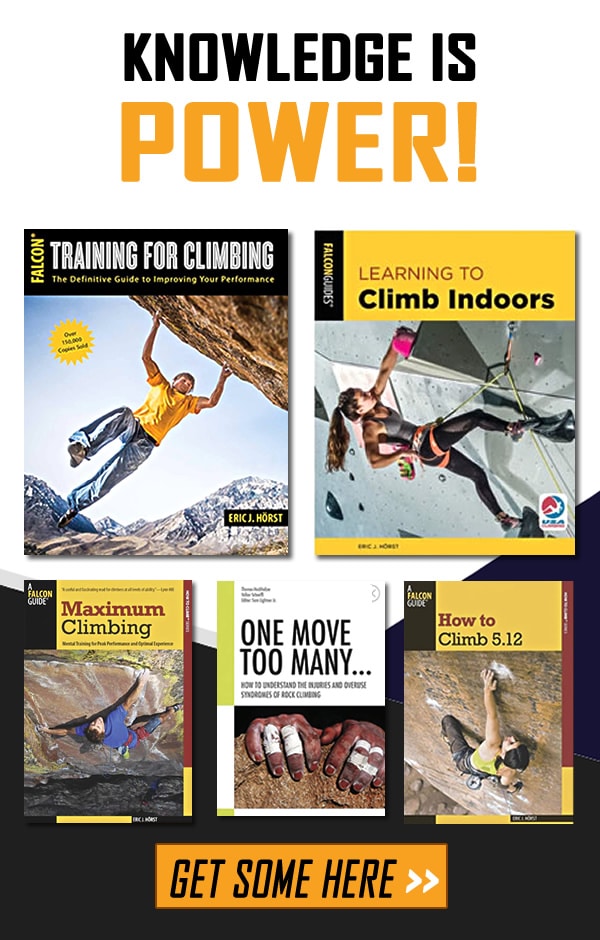Sinew training. What the heck is that?
Chances are you’ve never heard of “sinew training”…or even thought about it. After all, genetics and “luck” dictate the properties of our tendons and ligaments, right?
WRONG!
A growing body of recent research has shown that athletes can play an active role in developing stronger, higher performing tendons and ligaments by way of specific training and nutritional interventions. If you engage in hard finger training, frequently push your physical limits, and/or occasionally experience tendon or joint pain, then this podcast will be game-changer for you!
This podcast is the third in a series on sinew training. You will learn about the structure of connective tissues, and how you can intervene in your connective tissue health and function…and elevate your power and power-endurance in the process. It’s exciting stuff!
Be sure to revisit the first two podcasts in this series episode #33 and episode #34, and don’t miss the conclusion of this series in episode #37 coming in early July!
RUNDOWN
0:15 – Introduction to these ground-breaking podcasts on how you can play an active role in developing stronger, more robust and higher-performance tendons, ligament pulleys (A2 and such).
Be sure to listen to the first two podcasts in this series:
- Episode #33: Sinew Training #1 – Intro to Training for Stronger Tendons and Ligaments
- Episode #34: Sinew Training #2 – A Revolution in Finger Training for Climbers
2:35 – Eric explains why connective tissue injuries are so common among climbers…
4:00 – Quick review of the new research on muscle and tendon adaptations….which dispell many of the old myths about tendons and ligaments.
9:00 – Eric outlines the 5 parts of this podcast…
12:30 – Part 1: Foundational information about the tendon, ligament, and muscle extracellular matrix (ECM) structure. It’s all about proper collagen alignment, supporting net gains in collagen synthesis via adequate rest, and proper hydration. Factoid: gram for gram, collagen is stronger than steel!
26:00 – Part 2: Eric details the subtle, yet vitally important adaptations to training in tendon, ligament, and ECM. Learn the importance of–and differences–between strengthening and stiffening connective tissues. This is hugely important information for fine tuning your tendons for health and periods of performance climbing (or competition).
31:00 – Adaptation #1: Collagen synthesis. Important detail on collagen synthesis following training/climbing. Given adequate rest, a net gain in collagen molecules can result in a very gradual tendon hypertrophy. Factoid: The tendons of veteran climbers may be as much as 50% thicker than lesser experienced climbers.
36:00 – Adaptation #2: Enzymatic crosslinking…a more quick-developing adaptation that can increase connective tissue stiffness and performance. Although certain exercises protocols will actually reduce crosslinking and stiffness–some important distinctions here!
42:48 – Part 3: Learn about 6 confounding factors in collagen synthesis, crosslinking, and connective tissue health. You MUST know this information…and think critically about what factors may make you at greater risk for connective tissue injury…or slow recovery from training/climbing.
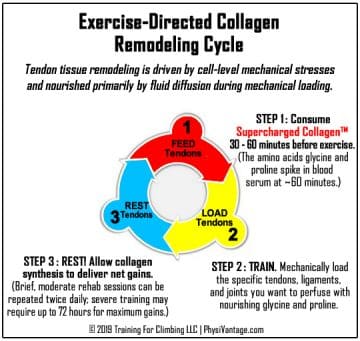
Click diagram to learn more about the science of sinew training for great strength, power, and injury resistance.
50:35 – Part 4: Training interventions for developing stronger, thicker tendons and annular (finger) tendon pulleys, stiffer more robust connective tissues, and how you can reduce stiffness and increase tendon health in the case of tendinopathy or other soft tissue injury. Get ready for a massive download of important information on specific training interventions and protocols for improve tendon/ligament strength….and increasing (or decreasing) connective tissue stiffness. Engaging in a highly personalized program is key!
1:07:08 – Part 5: The revolutionary research-derived nutritional intervention shown to increase collagen synthesis after targeted exercise. IMO, this is truly revolutionary information for power-endurance athletes such as rock climbers. The key is to consume vitamin C-enriched high-quality hydrolyzed collagen 30 to 60 minute BEFORE you engage in targeted exercise–only this way will the glycine and proline in the blood stream reach the synovial fluid and get drawn into the tendons and ligaments support up to a doubling of collage synthesis.
1:14:10 – How to spike glycine, proline, and vitamin C as you train your fingers? Consume Supercharged Collagen and follow the research-based training protocol and you may be able to double collagen synthesis after climbing-specific exercise. Available only from PhysiVāntage!
1:18:20 – Guidelines for proper Supercharged Collagen use and optimal benefit…and how to use it to support recovery from training and/or rehab of a connective tissue injury.
1:22:50 – Podcast wrap-up–PLEASE write and review and SHARE with your partners and friends.
Get 15% off at PhysiVantage.com with the discount code PODCAST15 at checkout.
Instagram – @PhysiVantage
Facebook – @PhysiVantage
For a comprehensive study of Training for Climbing, check out the 3rd edition of Hörst’s best-selling book!
Follow Eric on Twitter @Train4Climbing
Check out Eric’s YouTube channel.
Music by: Misty Murphy
SUBSCRIBE!
Subscribe on iTunes (or other podcast player) to “Eric Hörst’s Training For Climbing” podcast. You can also listen to the T4C podcast on Stitcher and Spotify! Please write a review on iTunes!
Copyright © 2000–2019 Eric J. Hörst | All Rights Reserved.

